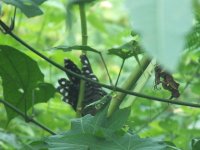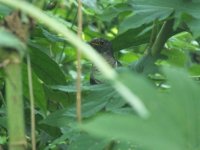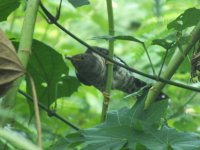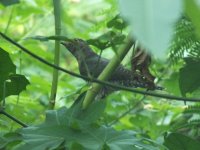Hi. I live in South Goa , India. I saw a cuckoo a few days ago and took a couple of photos. I'm having trouble identifying the exact species. I think it may be a lesser cuckoo but could also be an Indian cuckoo, both of which would be a rare find in my area. It seemed to be hiding in some tall grassy area in an abandoned plot near my house. I would really appreciate some help with identifying it. Have attached the pics. Sorry that they are a bit blurred.
-
Welcome to BirdForum, the internet's largest birding community with thousands of members from all over the world. The forums are dedicated to wild birds, birding, binoculars and equipment and all that goes with it.
Please register for an account to take part in the discussions in the forum, post your pictures in the gallery and more.
You are using an out of date browser. It may not display this or other websites correctly.
You should upgrade or use an alternative browser.
You should upgrade or use an alternative browser.
Cuckoo in Goa, India (1 Viewer)
- Thread starter zanderkay
- Start date
More options
Who Replied?
Common Cuckoo - BirdForum Opus would have to be excluded. Some links:
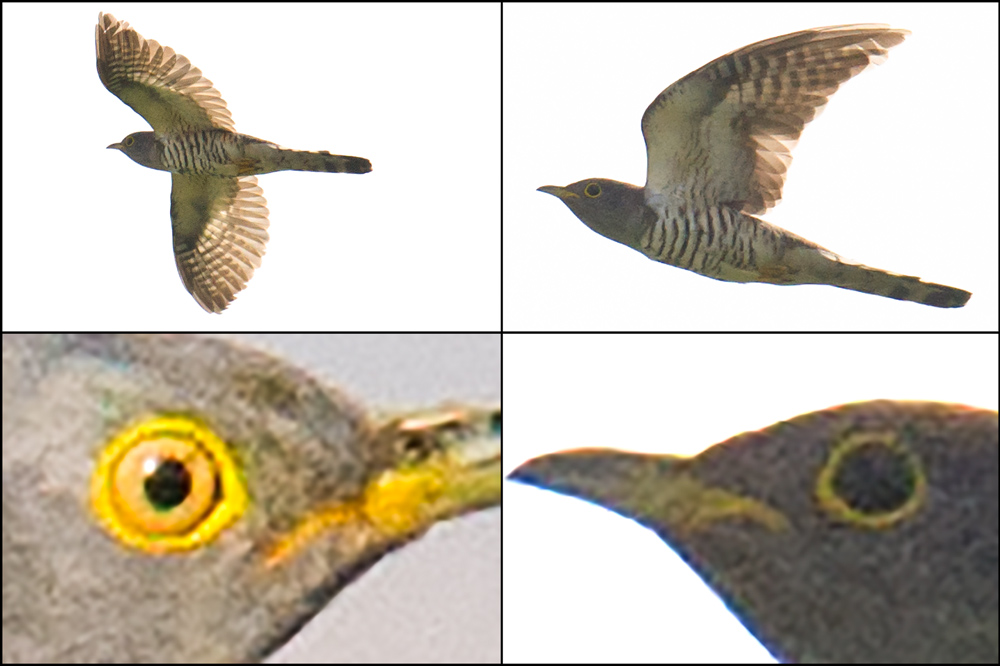
 www.shanghaibirding.com
www.shanghaibirding.com
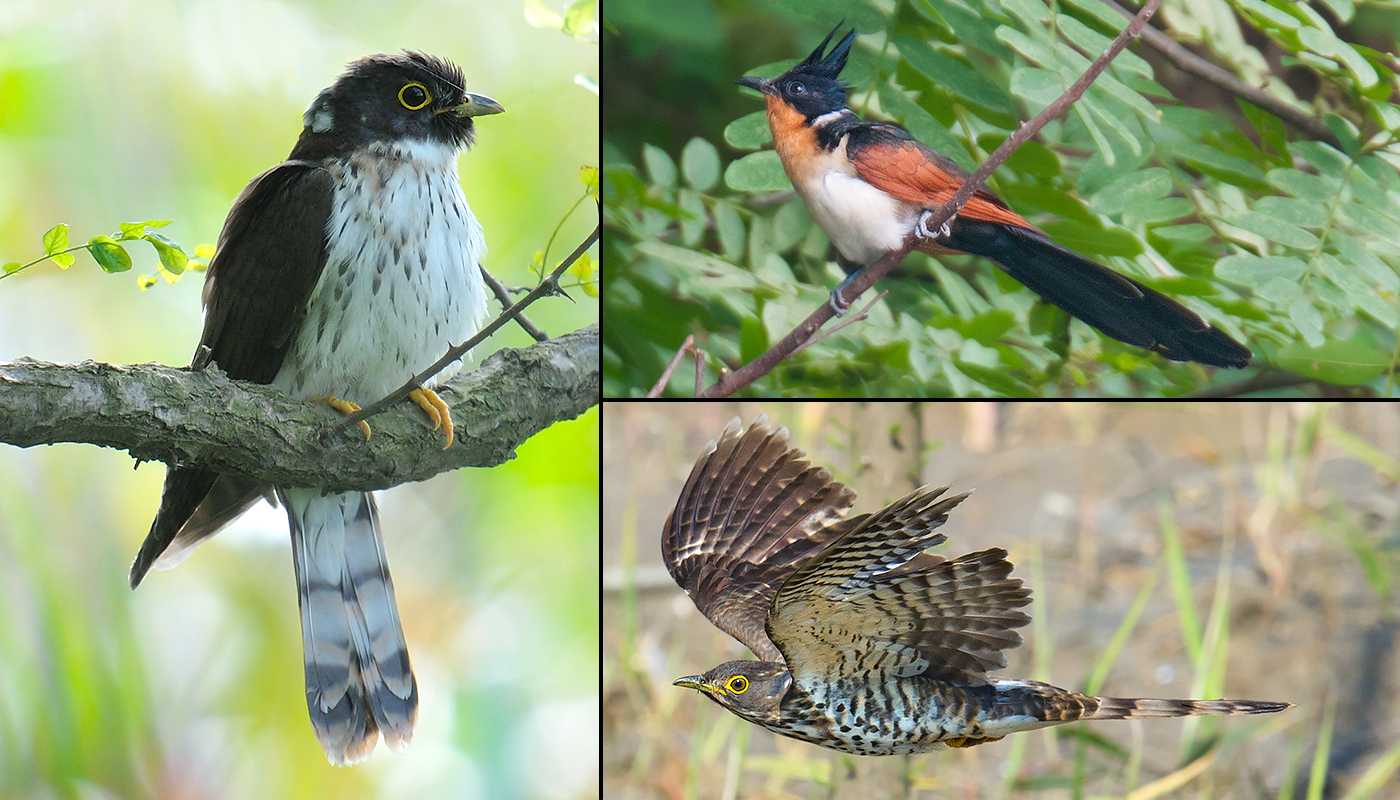
 www.shanghaibirding.com
www.shanghaibirding.com
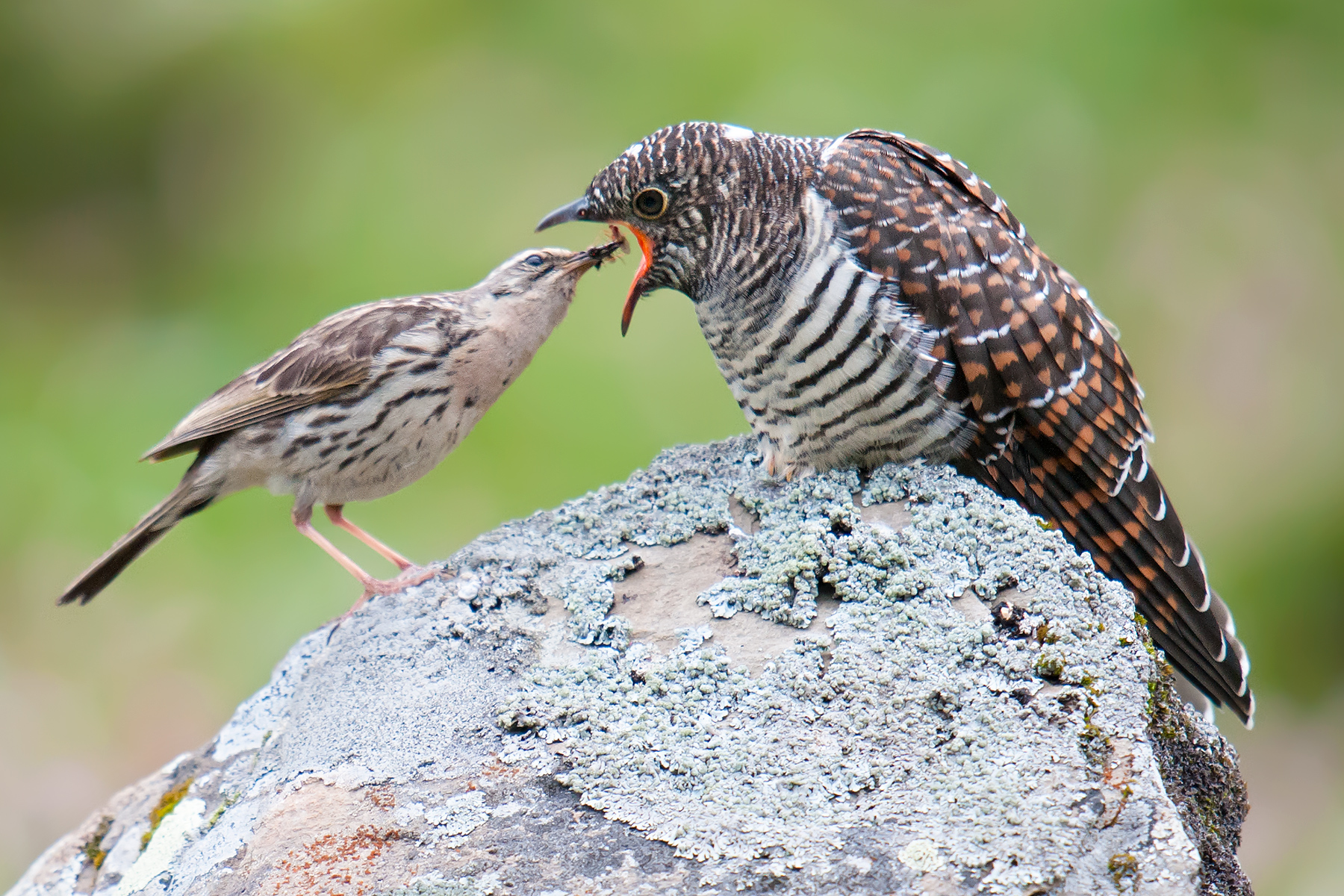
 www.shanghaibirding.com
www.shanghaibirding.com
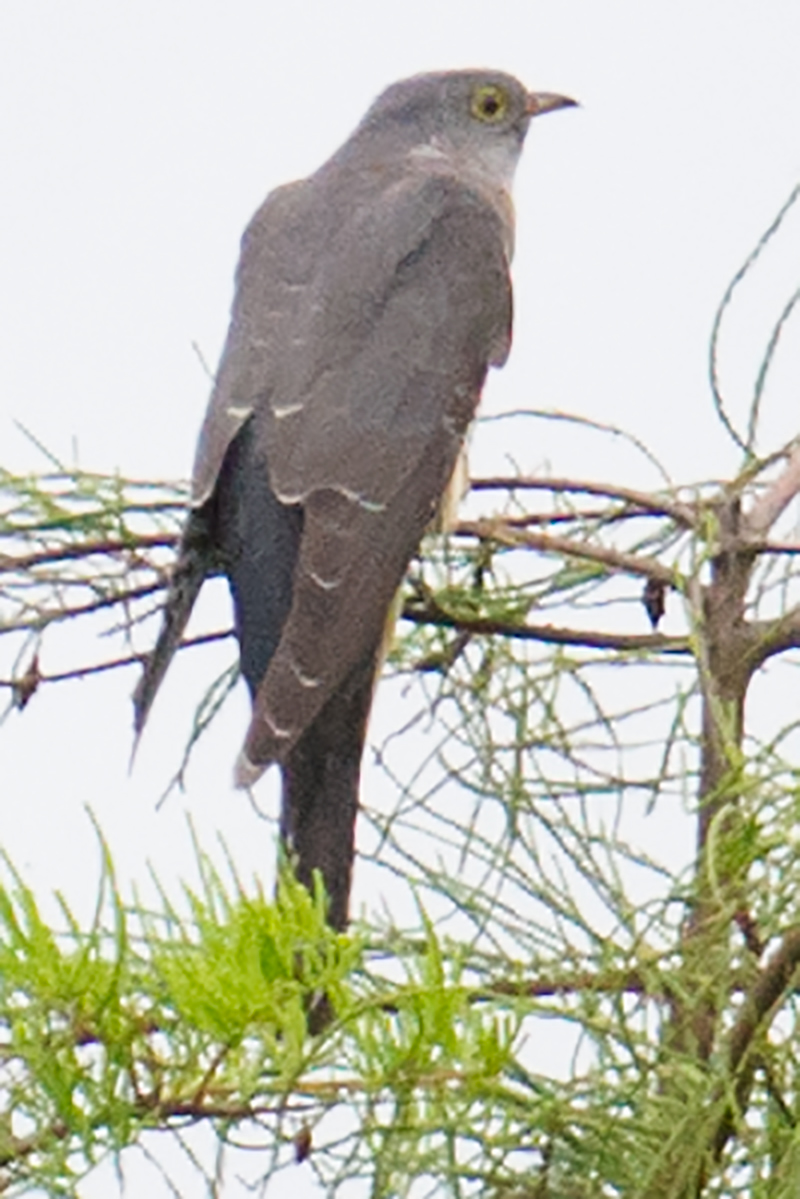
 www.shanghaibirding.com
www.shanghaibirding.com
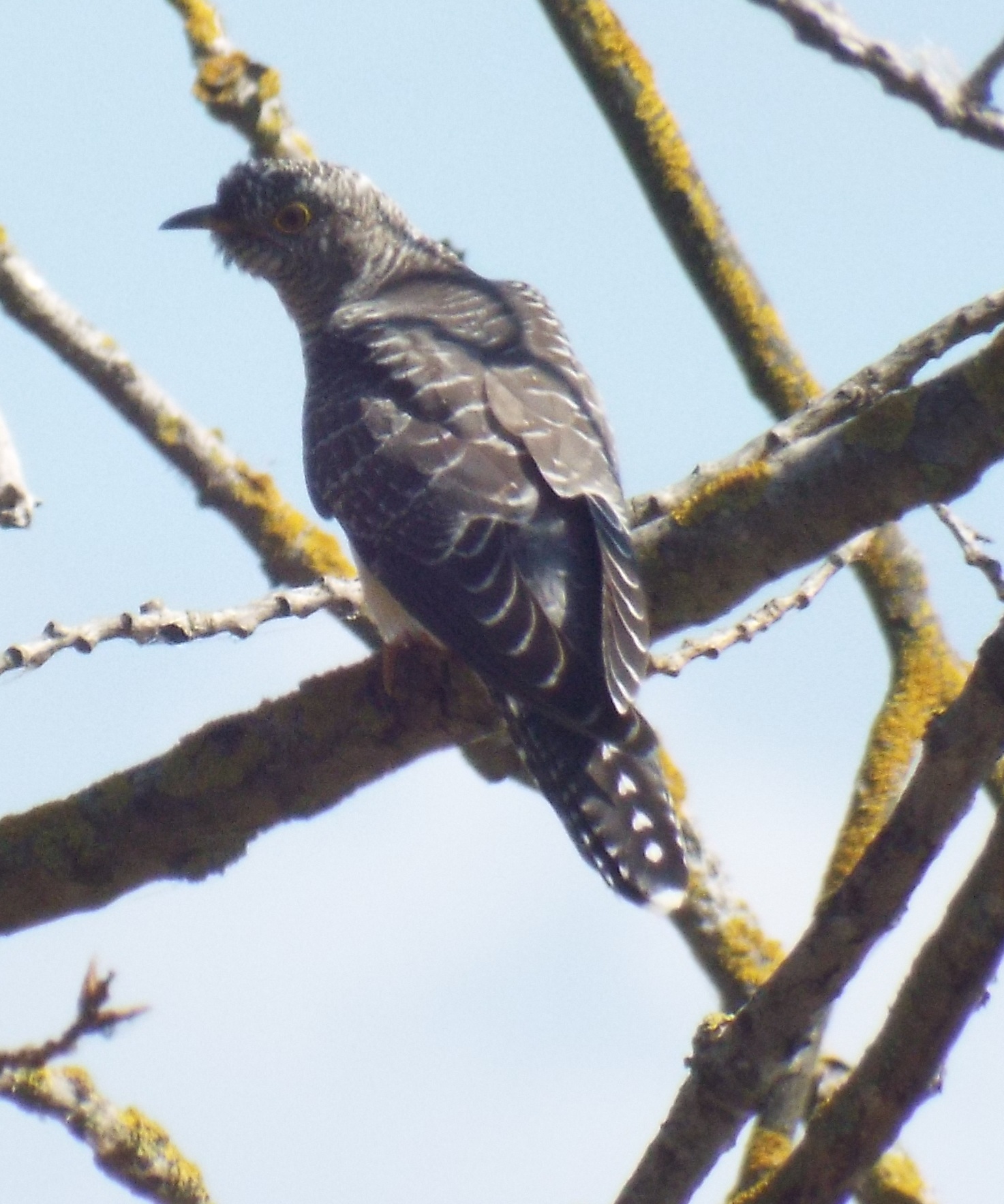
 www.shanghaibirding.com
www.shanghaibirding.com

 www.shanghaibirding.com
www.shanghaibirding.com
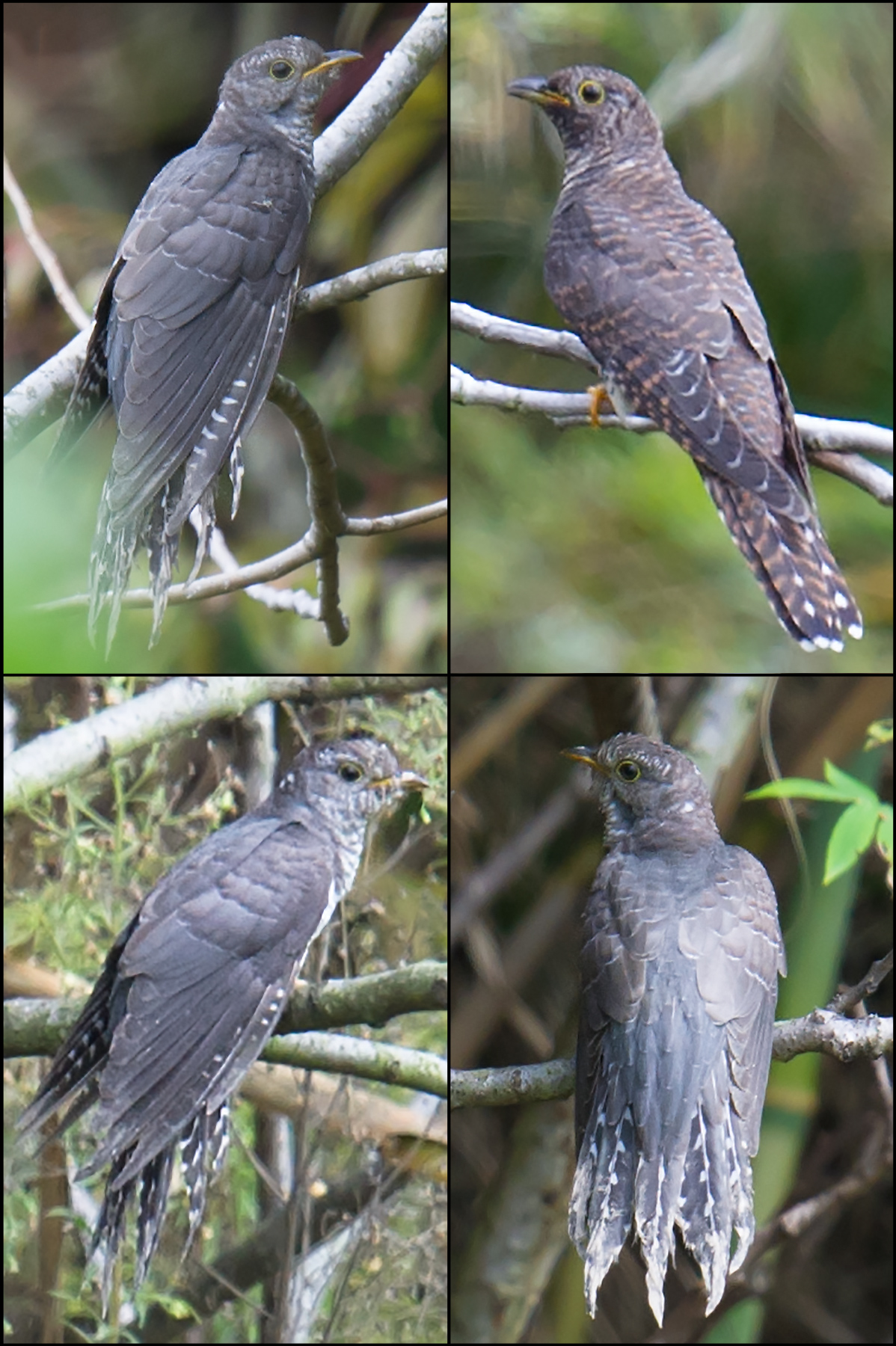
 www.shanghaibirding.com
Have fun!
www.shanghaibirding.com
Have fun!
EDIT: Do you have any more photos, no matter how obscured by vegetation (even blurry ones)?
EDIT 2: Thanks @Earnest lad for your very useful query.
EDIT 3: Just in case, did it make any sound?
EDIT 4: Other criteria: https://ebird.org/india/checklist/S150975478

Indian Cuckoo & Common Cuckoo: A Comparison - Shanghai Birding 上海观鸟
Indian Cuckoo and Common Cuckoo differ subtly. Read this post and learn how to separate Indian Cuckoo from Common Cuckoo.

The Cuckoos of Shanghai - Shanghai Birding 上海观鸟
Read this quick guide to the cuckoos of Shanghai and east central China.

A China-centric ID of Common Cuckoo - Shanghai Birding 上海观鸟
Common Cuckoo breeds throughout China except western deserts and Hainan. In Shanghai breeds Cape Nanhui. Similar to Himalayan and Oriental Cuckoo.

Why This Cuckoo Is Lesser Cuckoo - Shanghai Birding 上海观鸟
The cuckoo seen at Cape Nanhui, Shanghai, has the dark eye, well-defined, widely spaced barring, and small size suggestive of Lesser Cuckoo.

My Exchange with a Reader About Cuculus Cuckoos - Shanghai Birding 上海观鸟
A reader insists on basing his cuckoo ID on morphology, leading to an exchange about the five best-known cuckoo species in China.

Indian Cuckoo ID Basics - Shanghai Birding 上海观鸟
Indian Cuckoo is smaller than Common Cuckoo, but size alone rarely enough for an ID. The voice however of Indian Cuckoo is distinctive.

Lesser Cuckoo Identification - Shanghai Birding 上海观鸟
Lesser Cuckoo can be ID'd by sight; it's the smallest of the five Cuculus cuckoos of east-central China. Lesser Cuckoo also has a distinctive bubbling song.
EDIT: Do you have any more photos, no matter how obscured by vegetation (even blurry ones)?
EDIT 2: Thanks @Earnest lad for your very useful query.
EDIT 3: Just in case, did it make any sound?
EDIT 4: Other criteria: https://ebird.org/india/checklist/S150975478
Last edited:
Thanks for all that info. I'm sure it is not a common cuckoo because of the dark eye. My difficulty is in judging the size. I know that lesser cuckoo is smaller than an Indian cuckoo, but having never seen either, I'm unable to judge whether this would be considered smaller or not. But it did have wider spacing between the bars. And a thin bill. Which makes me think it is lesser cuckoo. But not compact or stubby like the description that one person has given on ebird. It looked slender to me. Unfortunately these are the only photos I got. It was quite difficult to get even these coz it was well hidden in thick foliage. And no , it did not make any sound.Common Cuckoo - BirdForum Opus would have to be excluded. Some links:

Indian Cuckoo & Common Cuckoo: A Comparison - Shanghai Birding 上海观鸟
Indian Cuckoo and Common Cuckoo differ subtly. Read this post and learn how to separate Indian Cuckoo from Common Cuckoo.www.shanghaibirding.com

The Cuckoos of Shanghai - Shanghai Birding 上海观鸟
Read this quick guide to the cuckoos of Shanghai and east central China.www.shanghaibirding.com

A China-centric ID of Common Cuckoo - Shanghai Birding 上海观鸟
Common Cuckoo breeds throughout China except western deserts and Hainan. In Shanghai breeds Cape Nanhui. Similar to Himalayan and Oriental Cuckoo.www.shanghaibirding.com

Why This Cuckoo Is Lesser Cuckoo - Shanghai Birding 上海观鸟
The cuckoo seen at Cape Nanhui, Shanghai, has the dark eye, well-defined, widely spaced barring, and small size suggestive of Lesser Cuckoo.www.shanghaibirding.com

My Exchange with a Reader About Cuculus Cuckoos - Shanghai Birding 上海观鸟
A reader insists on basing his cuckoo ID on morphology, leading to an exchange about the five best-known cuckoo species in China.www.shanghaibirding.com

Indian Cuckoo ID Basics - Shanghai Birding 上海观鸟
Indian Cuckoo is smaller than Common Cuckoo, but size alone rarely enough for an ID. The voice however of Indian Cuckoo is distinctive.www.shanghaibirding.com
Have fun!
Lesser Cuckoo Identification - Shanghai Birding 上海观鸟
Lesser Cuckoo can be ID'd by sight; it's the smallest of the five Cuculus cuckoos of east-central China. Lesser Cuckoo also has a distinctive bubbling song.www.shanghaibirding.com
EDIT: Do you have any more photos, no matter how obscured by vegetation (even blurry ones)?
EDIT 2: Thanks @Earnest lad for your very useful query.
EDIT 3: Just in case, did it make any sound?
EDIT 4: Other criteria: https://ebird.org/india/checklist/S150975478
I'm thinking it could even be a juvenile Indian cuckoo which would explain the smaller size?Thanks for all that info. I'm sure it is not a common cuckoo because of the dark eye. My difficulty is in judging the size. I know that lesser cuckoo is smaller than an Indian cuckoo, but having never seen either, I'm unable to judge whether this would be considered smaller or not. But it did have wider spacing between the bars. And a thin bill. Which makes me think it is lesser cuckoo. But not compact or stubby like the description that one person has given on ebird. It looked slender to me. Unfortunately these are the only photos I got. It was quite difficult to get even these coz it was well hidden in thick foliage. And no , it did not make any sound.

If you look at the undertail pattern, Indian is supposed to have two thick black bands: one at the end (terminal) and one towards the end (subterminal) of the tail (mentioned in Why This Cuckoo Is Lesser Cuckoo - Shanghai Birding 上海观鸟 and Indian Cuckoo ID Basics - Shanghai Birding 上海观鸟).
You can see examples of Indian Cuckoo's undertail pattern here:
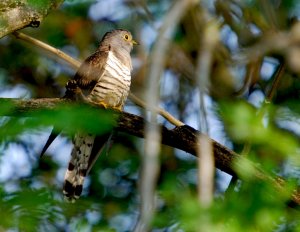
 www.birdforum.net
www.birdforum.net
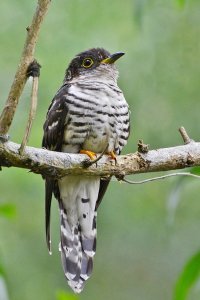
 www.birdforum.net
www.birdforum.net
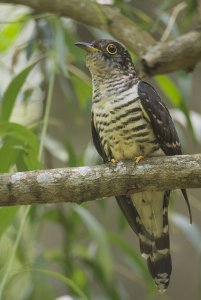
 www.birdforum.net
www.birdforum.net
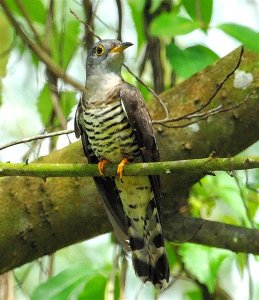
 www.birdforum.net
www.birdforum.net
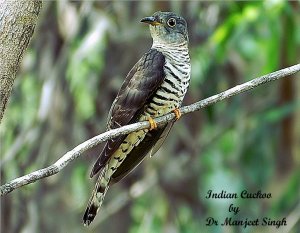
 www.birdforum.net
www.birdforum.net
Lesser also appears to be the expected un-Common Cuculus cuckoo, but better wait for expert confirmation. As far as I can tell, Lesser Cuckoo would be an uncommon migrant, while Indian Cuckoo would be an uncommon resident. Whatever it turns out to be, congratulations on your find and a very interesting bird.
EDIT: I should suppose a yellow gape means juvenile (unless it's moulting into immature plumage, maybe).
You can see examples of Indian Cuckoo's undertail pattern here:

Indian Cuckoo
Another difficult bird to get close to. But he has got a song that is very distinct. It goes something like this " One more bottle " " One more bottle " Must be Dr. Manjeet's favourite drinking partner in the bush....

Indian Cuckoo (Juvenile)

Indian Cuckoo
Juvenile. Common winter visitor/passage migrant to Singapore. Settings: 1458mm ISO400 1/100s 0EV.

Indian Cuckoo

A Indian Cuckoo meet's a Malaysian Cuckoo...lol..
Each day in my practice is a new day...sadness is there but emence laughter too...being half-loony i do meet some full lonny patients too..:D...like to-day..pefect day with sun out..tho it had rained all night heavely but morning was...
I don't think there would be such a size difference among fully-feathered birds, but I don't know. Ascribing the species here by size alone would be tricky, anyway.I'm thinking it could even be a juvenile Indian cuckoo which would explain the smaller size?
Lesser also appears to be the expected un-Common Cuculus cuckoo, but better wait for expert confirmation. As far as I can tell, Lesser Cuckoo would be an uncommon migrant, while Indian Cuckoo would be an uncommon resident. Whatever it turns out to be, congratulations on your find and a very interesting bird.
EDIT: I should suppose a yellow gape means juvenile (unless it's moulting into immature plumage, maybe).
Attachments
Thanks for all your help.
I use the merlin app too. 😊 The undertail pattern bit was helpful. I'm still not sure but leaning towards lesser cuckoo. Hope I see one again though it seems highly unlikely. Thanks again.If you look at the undertail pattern, Indian is supposed to have two thick black bands: one at the end (terminal) and one towards the end (subterminal) of the tail (mentioned in Why This Cuckoo Is Lesser Cuckoo - Shanghai Birding 上海观鸟 and Indian Cuckoo ID Basics - Shanghai Birding 上海观鸟).
You can see examples of Indian Cuckoo's undertail pattern here:

Indian Cuckoo
Another difficult bird to get close to. But he has got a song that is very distinct. It goes something like this " One more bottle " " One more bottle " Must be Dr. Manjeet's favourite drinking partner in the bush....www.birdforum.net

Indian Cuckoo (Juvenile)
www.birdforum.net

Indian Cuckoo
Juvenile. Common winter visitor/passage migrant to Singapore. Settings: 1458mm ISO400 1/100s 0EV.www.birdforum.net

Indian Cuckoo
www.birdforum.net

A Indian Cuckoo meet's a Malaysian Cuckoo...lol..
Each day in my practice is a new day...sadness is there but emence laughter too...being half-loony i do meet some full lonny patients too..:D...like to-day..pefect day with sun out..tho it had rained all night heavely but morning was...www.birdforum.net
I don't think there would be such a size difference among fully-feathered birds, but I don't know. Ascribing the species here by size alone would be tricky, anyway.
Lesser also appears to be the expected un-Common Cuculus cuckoo, but better wait for expert confirmation. As far as I can tell, Lesser Cuckoo would be an uncommon migrant, while Indian Cuckoo would be an uncommon resident. Whatever it turns out to be, congratulations on your find and a very interesting bird.
EDIT: I should suppose a yellow gape means juvenile (unless it's moulting into immature plumage, maybe).
Grahame Walbridge
Well-known member
It is a juvenile Cuculus based on the presence of white feathers on the head and extensive white tipping to scapulars, wing coverts and remiges. Indian can be eliminated straight away by the absence of a thick black subterminal tail band (present in all ages) and because the white tipping is far too discreet, even at this late date. Juvenile displays extensive broader buff or buffish-white feathering to head, nape, scapulars and wing coverts + underparts are wholly buffish with barring restricted to sides https://ebird.org/checklist/S73284294 the extent of these white feathers will reduce as the bird progresses post juvenile moult, so by Nov see ML466647421 - Indian Cuckoo - Macaulay Library Further, Indian is unique amongst Cuculus in lacking an hepatic morph vs very common in Lesser.
The images are not the easiest to assess, but on balance, I would cautiously suggest Lesser based on a combination of rather stubby bill, pronounced gapeline, underpart barring and overall compact appearance. Eye colour is tricky to assess since the bird is in shadow.
Grahame
The images are not the easiest to assess, but on balance, I would cautiously suggest Lesser based on a combination of rather stubby bill, pronounced gapeline, underpart barring and overall compact appearance. Eye colour is tricky to assess since the bird is in shadow.
Grahame
Thanks alot Grahame! That was indeed a detailed response. Very helpful. Appreciate it. 😊It is a juvenile Cuculus based on the presence of white feathers on the head and extensive white tipping to scapulars, wing coverts and remiges. Indian can be eliminated straight away by the absence of a thick black subterminal tail band (present in all ages) and because the white tipping is far too discreet, even at this late date. Juvenile displays extensive broader buff or buffish-white feathering to head, nape, scapulars and wing coverts + underparts are wholly buffish with barring restricted to sides https://ebird.org/checklist/S73284294 the extent of these white feathers will reduce as the bird progresses post juvenile moult, so by Nov see ML466647421 - Indian Cuckoo - Macaulay Library Further, Indian is unique amongst Cuculus in lacking an hepatic morph vs very common in Lesser.
The images are not the easiest to assess, but on balance, I would cautiously suggest Lesser based on a combination of rather stubby bill, pronounced gapeline, underpart barring and overall compact appearance. Eye colour is tricky to assess since the bird is in shadow.
Grahame
Users who are viewing this thread
Total: 2 (members: 0, guests: 2)





